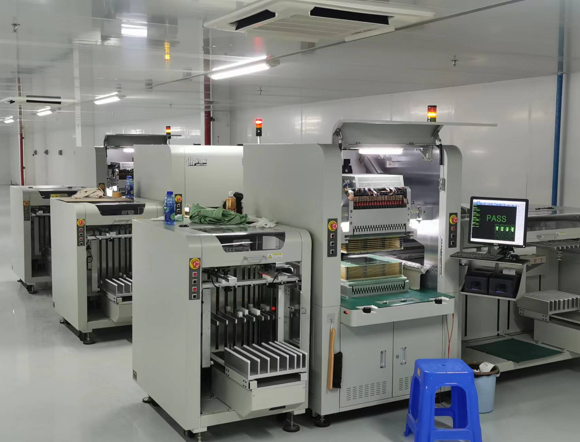
Testing Process at LongYu Technology Co., Ltd.
1. Electrical Testing
• Open/Short Circuit Testing: All boards undergo open and short circuit tests to ensure that there are no unintended electrical connections (shorts) or disconnections (opens) within the circuitry. Testing is conducted at 300 volts, with an impedance threshold of less than 50 ohms.
• Flying Probe Test: For high-density or prototype boards, flying probe testers are used to verify electrical connectivity. This test is essential for complex or custom PCB designs where conventional test fixtures are impractical.
| Test Type | Purpose | Voltage | Impedance Limit |
| Open/Short Circuit Test | Detects unintended connections | 300V | < 50 ohms |
| Flying Probe Test | Verifies custom/complex designs | Variable | Based on design specs |
|
|
|
2. Reliability and Environmental Testing:
• Impedance Testing: Impedance control is critical for high-frequency applications. This test ensures that the board's impedance values fall within a strict tolerance range, typically ±10%, to maintain signal integrity.
• Solderability Testing: Solderability tests confirm that the board’s pads can effectively bond with solder, ensuring strong connections during assembly. This is conducted following the IPC-TM-650 3.10 standard for solderability.
• Thermal Stress Testing: Thermal stress tests simulate high-temperature environments to assess the board’s performance under extreme conditions. This includes high-temperature resistance to ensure the PCB’s durability over prolonged use.
| Test Type | Purpose | Tolerance/Standard |
| Impedance Test | Ensures signal integrity | ±10% |
| Solderability Test | Verifies solderability | IPC-TM-650 3.10 |
| Thermal Stress Test | Tests high-temperature resilience | Factory-specific requirements |
3. Mechanical and Structural Testing:
• Peel Strength Testing: This test evaluates the adhesion strength of the copper layers to the PCB substrate, ensuring that the copper will not delaminate under mechanical or thermal stress.
• Tape Test: Used to check solder mask adhesion, the tape test involves applying and removing adhesive tape to verify that the mask remains intact, following IPC-TM-650 2.4.1 & 2.4.28 standards.
• Warp and Twist Test: A critical test for boards intended for precision applications, this assesses the board’s flatness and ensures it adheres to IPC-A-600G standards for minimal warping.
| Test Type | Purpose | Standard/Requirement |
| Peel Strength Test | Ensures copper layer adhesion | IPC-TM-650 2.4.8.5 |
| Tape Test | Verifies solder mask adhesion | IPC-TM-650 2.4.1 & 2.4.28 |
| Warp and Twist Test | Confirms board flatness | IPC-A-600G standard |
4. Microscopic and X-ray Analysis:
• Micro-section Analysis: Cross-sectional analysis, or micro-sectioning, involves examining a cross-section of the PCB under a microscope. This allows for precise measurement of layer thicknesses, hole quality, and plating consistency.
• X-ray Inspection: X-ray testing is conducted to inspect hidden or internal connections, particularly in multi-layer PCBs, to confirm the integrity of vias and internal layers without destructive testing.
| Test Type | Purpose | Equipment |
| Micro-section Analysis | Measures layer thickness and quality | High-resolution microscope |
| X-ray Inspection | Inspects hidden connections | X-ray imaging system |




